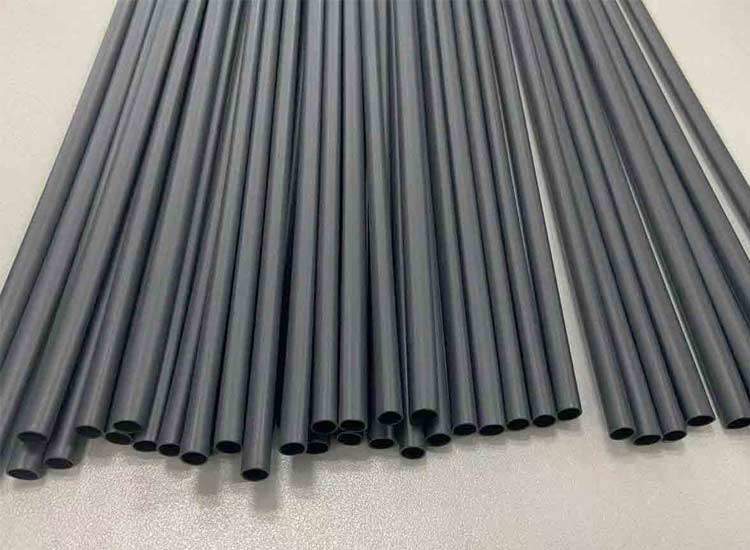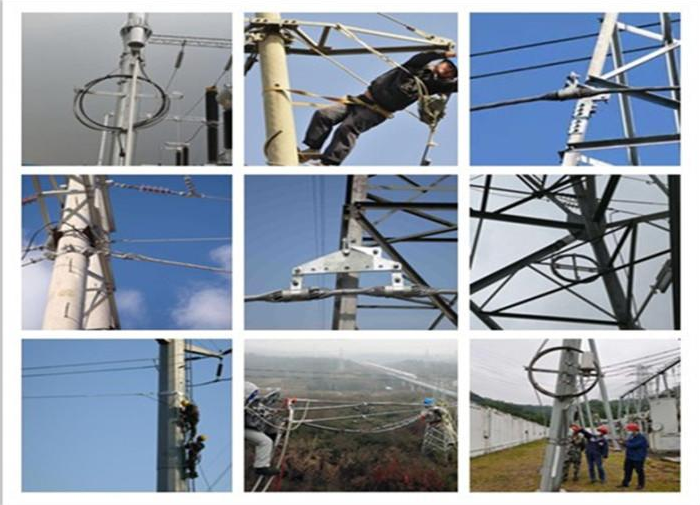OPGW Cable Optical Ground Wires are a critical component of modern communication and power transmission systems, providing both electrical grounding and optical fiber communication capabilities. The intricate design and construction of OPGW cables involve several key structures that enable their efficient performance in diverse environments. This essay ZMS delves into two vital structures of OPGW cables: the central strength member and the optical fibers, elucidating their significance, construction, and impact on the overall functionality of optical ground wires.
OPGW Central Strength Member
The central strength member serves as the backbone of an OPGW cable, providing mechanical support and stability to the entire structure. This component plays a crucial role in withstanding external forces such as tension, compression, and bending encountered during installation, operation, and maintenance of the cable. The central strength member is typically composed of high-strength materials such as steel or aluminum alloys. Chosen for their durability and ability to withstand harsh environmental conditions.

1.1 Construction
The construction of the central strength member involves several intricate processes to ensure its reliability and structural integrity. Typically, the central strength member consists of multiple layers of metallic wires wound helically around a central core. These wires are carefully selected and arranged to distribute mechanical stresses evenly along the length of the cable, minimizing the risk of deformation or failure.
1.2 Significance
The central strength member serves as the primary load-bearing element of optical ground wire on the power transmission line, imparting crucial mechanical properties such as tensile strength, flexibility, and crush resistance. During installation, the central strength member enables the cable to be pulled over long distances and around tight corners without sustaining damage. Moreover, it protects the delicate optical fibers housed within the cable, shielding them from external impacts and environmental hazards.
1.3 Impact on OPGW Cable Performance
The design and quality of the central strength member directly influence the overall performance and reliability of an OPGW cable. A well-engineered central strength member enhances the cable’s ability to withstand mechanical stresses and environmental extremes. Ensuring uninterrupted operation over its lifespan. Additionally, the central strength member facilitates efficient installation and maintenance procedures, minimizing downtime and associated costs.
About OPGW Cable Optical Fibers
Optical fibers constitute the communication backbone of optical ground wire cables, enabling the transmission of vast amounts of data over long distances at high speeds. These fibers utilize the principles of total internal reflection to carry optical signals with minimal attenuation, making them indispensable for telecommunications, and internet connectivity. And other data-intensive applications.

2.1 Construction
The construction of optical fibers involves the fabrication of ultra-pure glass or plastic strands with precise dimensions and optical properties. These strands, known as the core and cladding, are engineered to guide light along their length through multiple internal reflections. To enhance signal transmission and minimize losses, the core is surrounded by a cladding layer with a lower refractive index. Ensuring that light remains confined within the core.
2.2 Significance
Optical fibers play a pivotal role in enabling high-speed data transmission across vast distances with minimal signal degradation. Their low attenuation characteristics and immunity to electromagnetic interference make them ideal for long-haul communication networks, where reliability and bandwidth are paramount. Within an OPGW cable, optical fibers provide a dedicated channel for transmitting data signals alongside the electrical power lines. Facilitating efficient communication between substations, control centers, and other network nodes.
2.3 Impact on OPGW Performance
The performance of optical fibers directly influences the communication capabilities and operational efficiency of OPGW cables. By leveraging the inherent advantages of optical fiber technology, OPGW wires can support a wide range of communication protocols and services. Including voice, data, and video transmission. The deployment of high-quality optical fibers within OPGW cables enhances network reliability and enables real-time monitoring and control. And facilitates the implementation of advanced communication functionalities such as distributed sensing and smart grid applications.
About the Two Common Types of OPGW Cable
3.1 Central loose tube
Fibers are loosely placed in a sealed, waterproof central aluminum tube containing a water-blocking gel. The tube protects the fiber during installation and operation in harsh environmental conditions. The stainless steel tube can also be aluminum-clad depending on engineering requirements. The stainless steel fiber optic tube is located in the center of the fiber optic cable and is protected by single or multiple layers of aluminum-clad steel. And aluminum alloy wire, or steel wire. The metal wires provide mechanical strength to withstand the rigors of installation and operation while achieving electrical conductivity to control temperature rise under short-circuit conditions.

Each fiber can be clearly distinguished using a fiber optic identification system that consists of coloring and the number of ring markings on it. This compact design has high mechanical strength and a smaller diameter fault current rating. The smaller diameter also has good sag tension properties.
3.2 Multiple Loose Tube Type
Fibers are loosely placed in sealed, waterproof stainless steel tubes containing a water-blocking gel. Two or three layers of stainless steel optical tubes are helically stranded in the inner layers of a multi-layer fiber optic cable. Multi-loose tube type is mainly designed to meet the demand for the number of fibers exceeding 48 cores. The MULTIPLE PINE TUBE TYPE meets the requirements of huge crossovers and high current capacity.
The optical fibers are made of high-purity silicon dioxide and germanium-doped silicon dioxide. A UV-cured acrylate material is applied to the optical fiber cladding as the primary protective coating. The optical fibers use a special rotating device to successfully control the PMD value and ensure stability during cabling.
About the Application of OPGW Cable
ZMS produces OPGW cable from manufacturing to transportation, which has been praised by customers and cooperated many times. This cable is often widely used in power transmission lines, railroads, highways, power towers, and bridges. For example, in power transmission lines, the traditional ground wire usually only plays the role of grounding. OPGW fiber optic cable not only provides the grounding function but also can carry out bidirectional transmission and monitoring of electric power, which realizes the intelligent management of the power system. In places such as railroads and highways, the application of OPGW fiber optic cables can realize the transmission and monitoring of signals. Providing a guarantee for transportation safety and communication.

The central strength member and optical fibers represent two indispensable structures of overhead OPGW cables. Each plays a vital role in ensuring their mechanical robustness and communication capabilities. By combining the strength and durability of metallic components with the high-speed data transmission capabilities of optical fibers. OPGW cables offer a versatile solution for modern power and communication infrastructure needs. Understanding the construction, significance, and impact of these structures is essential for designing and deploying OPGW cables that meet the evolving requirements of today’s interconnected world.
